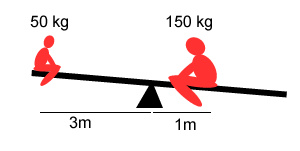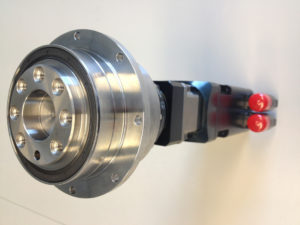Importance of torque in a gearbox
It happens often. Customers who have designed a drive system on paper but in practice, the system does not work as planned. Strange because if the nominal torque of the gearbox is equal or higher than the torque of the application you are good, or not? Unfortunately this does not always apply and people do not always choose the right gearbox. In fact, some gearboxes have a ‘required’ drive torque to take into consideration which brings you even further out of spec! Therefore we give you, in this article, a concrete example and an explanation of the various ‘rotational’ torques which are common used in practice.
No-load running torque essential for gearbox in packaging machines
Recently we received the following question: A customer had used in their packaging machine a worm wheel gearbox, 63 frame size with a ratio of 28:1 because he needed 100 rpm output 
Even after he had taken a one size bigger servomotor, he kept barely enough torque left to drive the pusher. After we went through the specifications of the servomotor and gearbox, we saw that the no-load running torque of the gear was 1.6 Nm! In other words: the servomotor could just power the gearbox, but has no reserves for the load. 1,6 Nm no-load running torque at 2,800 rpm is a power loss of 500W, not really an economical drive!
Apex Dynamics recommended the PIIR-series as this gearbox series has a No-load running torque of 0.25 Nm. The drive system is now functioning satisfactorily and the dynamic behaviour is much better. The machine can now finish its cycle faster, achieve the required torque and the investment in the overall powertrain dropped 
The various ‘rotational’ torques that are important for gearboxes
Fulfilling our slogan “Running faster” means of course that we help our customers with all the fun of selecting the right gearbox for your application. However our experience tells us that they would like to work it out for themselves! Therefore, we’ve listed the various terms below that we use frequently in daily practice.
| T2N or T2nom | The most common torque and often the most important is the nominal torque. This is the torque that can transmit a gearbox for a long time without any interruption. This torque is also called RMS torque (Root Mean Square) and can be calculated using the formula listed in our catalogues. |
| T2B or T2max | Maximum torque which can transmit the gearbox momentarily. Also called acceleration or peak torque. (The “B” in T2B represents the German “Beschleunigung” which means acceleration) This is the maximum torque which can occur every cycle. If this torque is exceeded it has consequences for lifetime. |
| T2not Emergency torque | This torque is actually the design torque of the gearbox without additional safeties. It is recommended not to calculate with this value, but it does give an insight into the safeties applied. This torque may occur 1,000 times during the service life of the gearbox, but is not guaranteed by any manufacturer. Apex Dynamics is using a safety factor of 3 in the planetary gearboxes. For example if the design torque is 300 Nm, the rated nominal torque is 100 Nm. |
| Tmot slip | The motor shaft is clamped in the hollow input shaft of the gearbox. This torque shows when the motor shaft will start to slip inside the gearbox. (Note: high precision- or servomotor gearboxes never use a key!) If the motor shaft is slipping it has major consequences: the drive loses its position and there may occur dangerous situations. Apex Dynamics calculates with a 5-fold safety to prevent this. |
| T01 Break-away torque | The torque that is required in order to bring the gearbox in motion, in other words: in order to overcome the internal friction from standstill. The lower the number, the higher the efficiency and the more power of the motor is left for the movement. A low break-away torque can be useful if a drive should be brought smoothly from standing still up to speed. |
| T012 No-load running torque | This is the torque that is required to rotate the gearbox without a load input at 3,000 rpm in an environment of 20 degrees Celsius. The lower the number, the higher the efficiency of the drive. This can have advantages when energy is scarce. For instance in battery-powered equipment such as AGV’s. |
| T210 Backdrive torque | This is the torque that is required in order to drive the gearbox in reverse. A low reverse torque can be interesting if you want to use the gearbox as accelerator or it can also be driven by the load when for instance a dancer for a feeding belt. |
Just for completeness: a bending torque (M2K) is not a rotational torque! This torque says something about the radial stiffness (deflection) of the gearbox.
The list above is not complete, but we have discussed the most common rotary torques. Do you have an application which is not described or if you have a very specific question?
We are happy to help you personally, contact us.
Press release Helmond Maart 14,2016.




